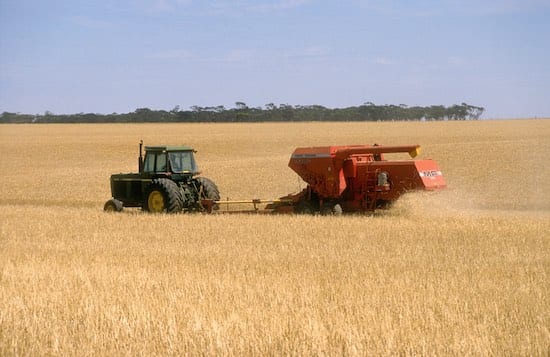
Australia’s green bank has turned its focus to the nation’s farming sector, with an investment of $100 million in a fund designed to boost energy efficiency, sustainability – and productivity – in agribusiness.
The Clean Energy Finance Corporation said on Wednesday it had committed the funding to the agricultural platform of Macquarie Infrastructure and Real Assets (MIRA), marking its first equity investment in the sector.
The move was described as a major evolution of the CEFC’s existing strategy to drive energy efficiency in agriculture – a sector that is responsible for 13 per cent of Australia’s national greenhouse gas emissions.
If follows the commitment of more than $200 million in loan facilities to smaller scale clean energy projects on farms across the country.
The investment with MIRA will target reduced on-farm energy intensity on a per unit of production basis, and the delivery of improved financial and environmental efficiency – with a particular focus on the cropping sector.
The CEFC said it would take a “technology-driven, whole-of-farm approach,” incorporating precision agriculture and other sustainable farm management practices to deliver increased productivity with improved energy efficiency.
But the really “ground-breaking element” of the investment, it said, was that it included a collaboration with the CSIRO, whose expert analysis would be used to help share clean energy learnings across the farming sector.
The CEFC said CSIRO’s expertise would also be used to establish of a specialist Energy, Emissions and Efficiency Advisory Committee – 3EAC – which will support new on-farm standards in energy efficiency and emissions reduction.
The Committee would also develop clean energy models for broader use in the farming sector.
“This is an exciting investment which demonstrates the very broad potential of a clean energy focus to make a positive difference right across the Australian economy,” said CEFC CEO Ian Learmonth in comments on Wednesday.
“Australian agriculture is globally recognised for its innovation and the high quality of our products. Through this investment, our goal is to see it also recognised as a leader in lowering on-farm
emissions, through better technology and on-farm practices.
“We are delighted to be able to include the CSIRO in this program, as an important way to share learnings and insights right across the agriculture sector.”
MIRA’s head of agriculture, Elizabeth O’Leary, said the investment was an important contribution to research and development in agribusiness, that would help boost energy efficiency, make environmental savings, and maximise soil health and productivity.
“We have been managing a significant portfolio of farmland in Australia for more than a decade and look forward to bringing our expertise and experience across a range of production environments to further energy efficiency and sustainability practices in the sector,” she said.
CEFC transaction lead, Rory Lonergan said the cropping sector had the potential to lead the way in adopting new technologies and evolving farm practices to reduce overall sector emissions.
“Clean energy also offers substantial economic benefits for farmers in the form of lower energy costs and greater operational efficiencies,” he said.
“By working alongside one of the largest institutional managers of Australian farm assets to embrace energy efficiency, we are aiming to create a clean energy model that can be used sector-wide,
including in small and larger-scale family-based operations, which make up 95 per cent of the agriculture sector.”









